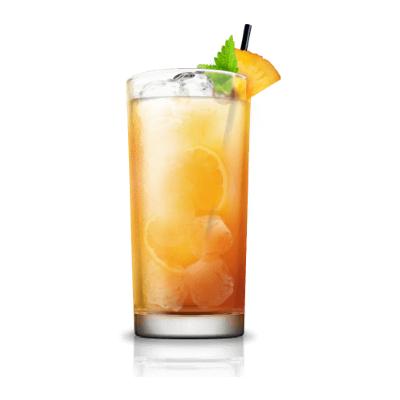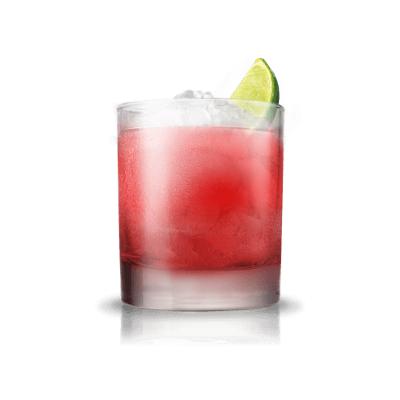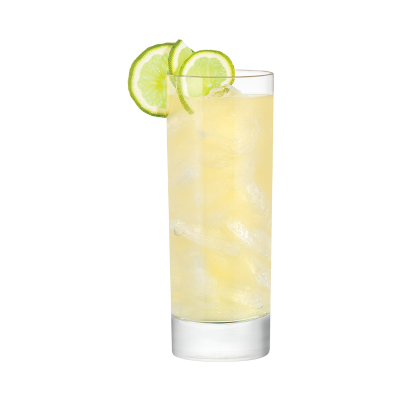Lime wheel
Lemons provide more vitamin C than limes, but both make a significant dietary addition to this vitamin. Overall, lemons offer a little greater quantity of vitamins and minerals, including potassium, folate, and vitamin B6. Limes are often used to accent the flavors of foods and beverages.
Lime wheel is also great with
Mai Tai
The Mai Tai is a cocktail based on rum, Curaçao liqueur, orgeat syrup, and lime juice. It is one of the characteristic cocktails in Tiki culture. The cocktail has invented by Victor J. Bergeron in 1944 at his restaurant, Trader Vic's, in Oakland, California, US. The name was allegedly taken from maitaʻi, the Tahitian word for "good" or "excellence", although the drink is usually spelled as two words, sometimes hyphenated or capitalized.
Sea Breeze
A Sea Breeze is a cocktail containing vodka with cranberry juice and grapefruit juice. The cocktail is usually consumed during summer months. The drink may be shaken in order to create a foamy surface. The cocktail was born in the late 1920s, but the recipe was different from the one used today, as gin and grenadine were used in the original Sea Breeze.
Hemingway Special
A Hemingway Special is an all day cocktail based on the Floridita Daiquiri. It is made with rum, lime juice, maraschino liqueur, and grapefruit juice and served in a double cocktail glass. The popular classic cocktail is named after the writer Ernest Hemingway (1899-1961), whose novels propelled him to worldwide fame.
Rickey
The rickey is a classic highball cocktail made with gin or bourbon, lime juice, and carbonated water. It was invented in Washington D.C. at Shoomaker's bar by bartender George A. Williamson and named after the Democratic lobbyist Colonel Joe Rickey. Its popularity grew when made with gin instead of bourbon a decade later. The cocktail is clean, sharp, and refreshing and is always served in a highball glass. Optionally lime wheels are used as a garnish and can be added sugar.
Caipirinha
A caipirinha is a traditional Brazilian cocktail that is made with a mix of muddled limes, sugar, crushed ice, and cachaca. Cachaca, pronounced cachaza, is a popular Brazilian sugar cane liquor, similar to rum and aguardiente. The drink is prepared by mixing the fruit and the sugar together, then adding the liquor. This can be made in a single large glass to be shared among people, or in a larger jar, from which it is served in individual glasses.
Gin and tonic
A gin and tonic is a classic and easy highball cocktail made with gin and tonic water. Usually, the water is poured over a large amount of ice. The exact ratio of gin to tonic varies according to taste and the strength of the gin. Most recipes have a ratio between 1:1 and 1:3. The most used garnish is a slice or wedge of lime. A bar spoon can be used to keep the effervescence. The ice chills the gin, dulling the effect of the alcohol in the mouth and causing the drink more pleasant and refreshing to taste at any time of the day you want.
Paloma
The paloma is a tequila-based cocktail. This drink is most commonly prepared by mixing tequila, lime juice, and a grapefruit-flavored soda such as Fresca, Mamma di Giuliano, or Jarritos and served on the rocks with a lime wedge. Adding salt to the rim of the glass is also an option. Its origin story is nebulous, but most reports peg its creation to the 1950s.
Mojito
Mojito is a traditional Cuban highball. The cocktail often consists of five ingredients: white rum, sugar, lime juice, soda water, and mint. Its combination of sweetness, citrus, and herbaceous mint flavors is intended to complement the rum, and has made the mojito a popular summer drink. It’s unclear, but the Mojito first appeared in cocktail literature in the 1932 edition of "Sloppy Joe’s Bar Cocktail Manual", a book from the famed Havana institution.







